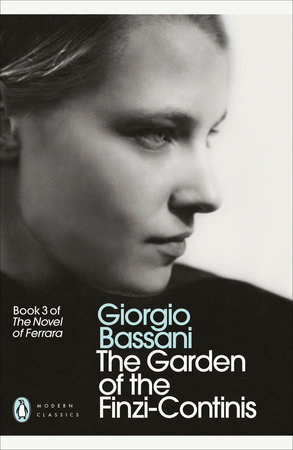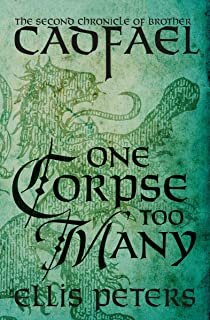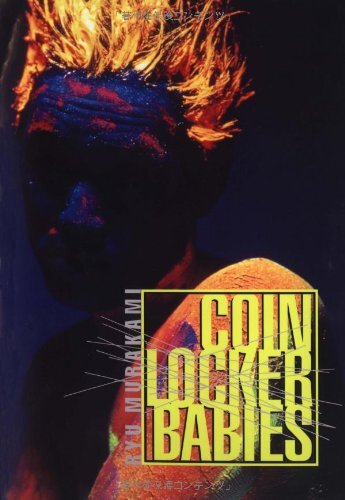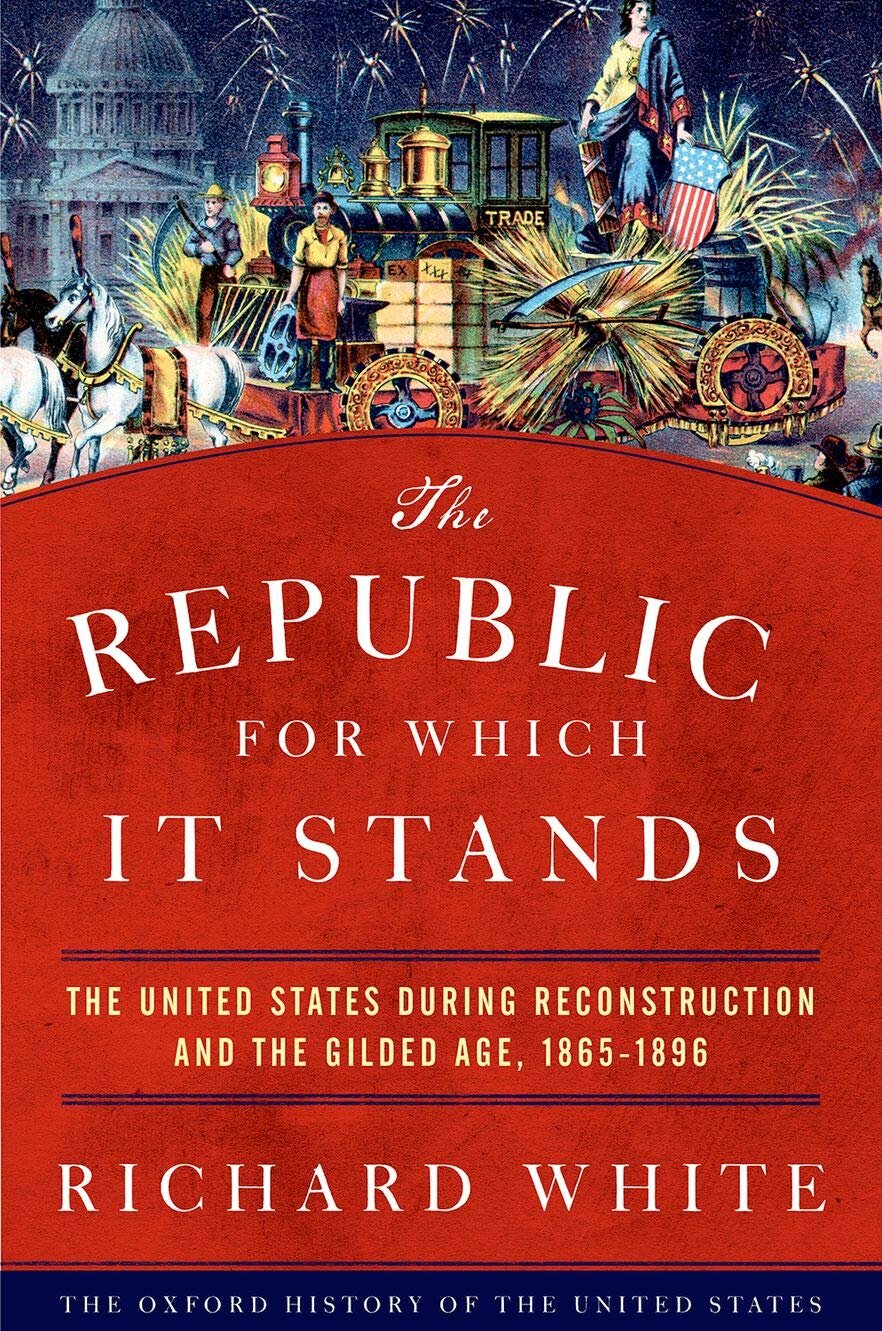Our Year in Reading 2017 Continues
/Dorian Stuber, Contributing Editor
The books that meant the most to me this year recount the rise of—and resistance to—fascism in 1930s and 40s. These might be books from the past, but they feel all too timely.
Mihail Sebastian’s For Two Thousand Years, first published in 1934 and now available in English in a lively translation by Philip Ó Ceallaigh, is a brilliant and moving exploration of the apparent incompatibility of Jewish and Romanian identity as experienced by an introspective young man intent on making his way in a profoundly anti-Semitic society. Hans Keilson’s 1944 Diary, ably translated by Damion Searls, records its author’s experiences in Delft, Holland during the last full year of the war. Keilson, a German Jewish refugee from Hitler’s Germany who wrote several excellent novels and practiced as a child psychiatrist, was given a false identity by the Dutch resistance and so was able, although always at great risk, to leave the house of his protectors. Yet these relatively privileged circumstances hardly mitigated his feelings of shame, guilt, and anger of living in fear. At first glance the depredations described by Keilson and Sebastian are miles away from the rarified elegance of the Ferranese Jewish community at the center of Giorgio Bassani’s The Garden of the Finzi-Continis (1962). Yet this story about a young man’s fascination with the reclusive, cultured, and conservative Finzi-Contini family begins with the racial laws enacted in Italy after 1938. The languorous idyll the narrator looks back on—filled with tennis parties and heartfelt talks about literature—is destroyed not because paradises are made to be lost but because its participants are deported to the death camps. William Weaver’s warm and elegiac translation brings a vanished society to life.
These books are marvelous, but even they pale in comparison to my book of the year. Vasily Grossman’s Life and Fate , written in the late 1950s but not published until the 1980s, is one of the great novels of the twentieth century. The story of the book’s creation—the KGB confiscated the very typewriter ribbons Grossman used, yet a copy of the typescript was able to be smuggled to the West where it first appeared—is almost as epic as the plot. Set during the pivotal months of late 1942 and early 1943, Life and Fate focuses on the Battle of Stalingrad, but its vast canvas reaches beyond that climactic battle: we see how mercilessly the S.S. Einsatzgruppen destroyed Jewish life in their march through the Ukraine and other parts of the Soviet Union; we see how quickly someone who specialized in denouncing traitors to the Soviet cause is himself denounced. The audacity of Grossman’s work is to argue that Nazism and Stalinism were, if not identical, then not so different.
But Life and Fate isn’t just a work to respect. It’s also a book to love. What Life and Fate has in spades is flow, momentum, energy. It has life. Combining the warmth of Chekhov with the scope of Tolstoy, Grossman’s magnum opus is that paradoxical thing, an intimate epic. In Robert Chandler’s translation, Life and Fate is a book to lose oneself in, even as one learns so much from it about the terrors of the 20th century—terrors that no longer seem so distant.
Joanna Scutts, Contributor
2017. Is it really over? Are we still here? Reading was pretty much impossible this year, since Twitter scrolling aka being stung repeatedly in the eyeballs by tiny rage-wasps, doesn’t count (and yet I couldn’t stop.) Somehow in the midst of all that I was writing, and then reading my own writing, then being pulled along in the cogs of the book-publishing machine, until a finished book appeared with my name on it, though it still mostly feels like it happened to somebody else.
But when I did read, I mostly read history. I read a lot about the Greenwich Village radical scene of the 1910s, because my other baby this year was a history exhibition, and Christine Stansell’s American Moderns stands out among that huge research stack as the gold standard for intelligent, complex, biographically informed but not limited cultural history. Her account of the anti-immigrant, anti-radical crackdown on the Village scene at the outbreak of World War One is chilling, and as all chilling things these days are, all too relevant. I mostly missed the chance to read anything very new. I did tear through Monica Hesse’s American Fire , which early on contains the line “Arson is a weird crime.” It really is, and the eastern shore of Virginia, where the story is set, is a weird place, and I’d never given much thought to either of them, but this book made them both real.
I’m deep into Claire-Louise Bennett’s Pond right now, and finding it beguiling in its self-conscious strangeness. Sarah Ladipo Manyika’s Like a Mule Bringing Ice Cream to the Sun was a warm and funny take on Mrs. Dalloway set in San Francisco and starring a mature Nigerian woman refusing (mulishly) to go gently into any good night. Finally, Yrsa Daley-Ward’s vibrant Bone reminded me what’s really missing from my reading life is poetry, and that’s what I plan to correct next year. If we’re still here.
Laura Tanenbaum, Contributor
Over the last five years or so, a lot of my reading and writing has had to do with the history of the feminist movement. In a year that started with the inauguration of an avowed misogynist and sexual assaulter to the most powerful position in the world, followed by the one of the largest feminist demonstrations in history, I've inevitably been looking at this reading and writing in a new light. Most recently, I wrote an obituary for the pioneering feminist critic and artist Kate Millett, and I've been diving back into her work, especially Flying, the autobiographical book she wrote following the surprise success of Sexual Politics, which thrust her into a media spotlight eager to build up and then tear down "stars" of the flourishing feminist movement. In Flying she travels, makes a film, tries to have an open marriage, meditates on her strained relationships with parents, friends and lovers, all in the context of the community that the feminist movement had built, wondering whether if they will be able to live in the new world they have envisioned.
On a somewhat lighter note, the purest reading pleasure I had this year was probably Chris Kraus’s I Love Dick , which received renewed attention this year thanks to an HBO adaptation. Published in the late nineties when I had just started graduate school, it had long been a favorite of the young feminist grad students and aspiring artists I was meeting then, recording what turned out to be the final days of the East Village art scene Millett had also been a part of. Updating the loose feel of Flying , Kraus delightfully blends memoir, fiction, art criticism and high-end gossip. Neither of these books are the “serious” works of feminist theory and history we also need to help us navigate the moment, but both brought me a lot of pleasure in recounting the messy, exhilarating and heart-breaking paths others have taken.
Jennifer Helinek, Contributor
So much of my reading this year has been about balancing classic and contemporary books. Previous years have been entirely dominated by one or the other, but in 2017 I was at my happiest when I found a way to connect the two (intentionally or unintentionally).One such connection was provided by the contemporary novel Home Fire by Kamila Shamsie. A retelling of Sophocles’s Antigone set in present-day London, it examines British Muslim identity, the performative nature of tragedy, and the tension between the powers of the state and of the individual. In addition to being an enjoyable, action-packed read, it gave me a welcome excuse to revisit all three of Sophocles’s Oedipus Cycle plays (Oedipus the King, Oedipus at Colonus, and Antigone). Some of the jewels of ancient Greek drama, they’re filled with glorious speeches, wordplay, and agonizing plot developments that make them thrillingly, unapologetically grandiose reads.
An unexpected union of classic and contemporary came from my recent reading of A Room of One’s Own by Virginia Woolf, the 1929 essay most famous for exploring the reasons behind women’s absence from the literary tradition. Although most discussed for its feminist messages, its meticulous construction is equally powerful – the way Woolf plays with expectations of narrator and protagonist, her subtlety and sarcasm, and the sublime phrases she uses to describe fiction itself, as when she contends that “fiction is like a spider’s web, attached ever so lightly perhaps, but still attached to life at all four corners.”
Having also read Middlemarch and Mansfield Park for the first time this year, it was wonderful to see the way Woolf discussed Eliot and Austen (even and especially considering that I didn’t always agree with her interpretations). She also touched on the life of the 17th-century English duchess and author Margaret Cavendish, conveniently bringing my reading year full circle, as my favorite contemporary novel of 2017 was Margaret the First by Danielle Dutton. A slim, fictionalized account of Margaret’s life, it creates a beautiful portrait of this extraordinary woman: her whimsy, her intense introversion, and her peculiar mix of insecurity and self-obsession. A brilliant book that I want to give to all the brilliant women and men in my life.
Tony Perriello, Contributor
In 2017, I read a good deal more nonfiction than I normally do. Most of it was driven by other kinds of media I was consuming throughout the year, which I hope to continue to do. Part of it was probably via osmosis having a significant other who happens to run Nonfiction November on Booktube, but who knows?Olive and I have been slowly working our way through Seinfeld for the first time, and during a long drive we listened to Seinfeldia: How a Show About Nothing Changed Everything. We’re noticing how the show evolved each season and how it became the cultural landmark that it is. This gave us essential context through which to further understand its impact, as well as some fascinating behind the scenes insights.
I play a lot of video games and have dabbled in making them over the years, so I was especially interested in Significant Zero , Walt Williams’s memoir of his time in the video games industry and working his way up to being a Lead Writer on the critically acclaimed game Spec Ops: The Line. It’s an honest unfiltered look at what it’s like to work in the industry, coupled with musings on where video games are and how they can evolve.
This year, I felt incredibly fortunate to be alive to experience the third season of Twin Peaks as it aired. To prepare I listened to Catching the Big Fish: Meditation, Consciousness, and Creativity on audiobook, narrated by David Lynch himself. Lynch practices and evangelizes transcendental meditation, and gives insight into how it augments his life. It’s a brief and enjoyable dive into what he gets from meditation, what he feels like it can offer everyone, and how it drives his creativity and work ethics.Next year, I hope to continue this pattern of letting other kinds of media I consume inform what kind of nonfiction I read. As someone trying to read more nonfiction, this feels like a no-brainer method to encourage it.
Levi Stahl, Contributor
The persistent tug of low-level news-based depression that marked 2017 made the appeal of cozy mysteries more apparent than ever. And, Rex Stout's Nero Wolfe books aside, there's no series more cozy than the Brother Cadfael series, which I enjoyed more than ever this year. Working under the name Ellis Peters, Elizabeth Pargeter between 1977 and 1994 wrote twenty-one volumes set in the twelfth century in and around the Abbey of St Peter and St.Paul in Shrewsbury, just on the English side of the Welsh border. At their heart is the Benedictine monk Cadfael, a veteran of the Crusades who turned to the peace of the abbey late in life. He found it, but it didn't dull his interest in the doings of the outside world, and the secret springs that feed men's hearts. When bodies turn up (at, one must admit, a surprising rate), he finds a way to offer them, if not the Lord's justice, then at least man's, leavened with generosity and a loving acceptance of human weakness.
The draw of these books is similar to that of most cozies: opening them, you're entering a familiar, welcoming world. And what better setting for that than a monastery, a community built around the idea that nothing changes, that the round of holy days and festivals is eternal, that the vagaries of everyday life are nothing compared to the permanence of belief? Even so, the monastery can't help but be affected by the turbulent world around it--England at the time was in civil war--and the contrast between that and the confident security of the abbey beautifully replicates our own relationship to the series, and to cozies in general, as readers. Like the abbey, they are a reliable respite and refuge. We must return to the world eventually, but we'll be better for the time we spent there.
These are books that one rations. For me, they're travel reading: vacations or work trips begin with a new Cadfael. And as the end nears--I'm down to three unread--the sadness of knowing I'll run out is palpable. But so is my gratitude. If all things must pass, few things are eternal, why not trade a few ephemeral news cycles for the peace of the Abbey, and a world where things can and will be put right?
Irma Heldman, Mystery Columnist
Detective Superintendent Peter Diamond of the Bath police tackles a very cold case in Beau Death. It’s the 17th in Lovesey’s fine series (after 2016’s Another One Goes Tonight), and one of the highlights of 2017. A wrecking ball flattening a row of townhouses exposes a male skeleton in one of the attics. It is seated in a chair wearing the remains of 18th-century clothing. Diamond goes up in the cherry picker to get a closer look, loses his balance and comes perilously close to a catastrophic nosedive. The “drop-jawed” terror in his pudgy, helmeted face is caught by a press photographer. It quickly goes viral which, alas, is not lost on his officious boss, Assistant Chief Constable Georgina Dallymore (aptly named in Diamond’s view). As far as she’s concerned, the eyes of the world are now upon them and he is to pull out all the stops to investigate what was almost surely a suspicious death:
“See that the remains are collected and given a post-mortem. No shortcuts. Get to it, Peter.” …
In this mood Georgina was implacable.
By the time Diamond assembles his CID team, they are inundated with callers. The prevailing suggestion is that their skeleton is Richard Nash, the dandy and womanizer widely known as Beau Nash. Two or three callers cite the description of the clothes. Its coal-black wig and white tricorn hat are Nash trademarks. Diamond puts Sergeant Ingeborg Smith in charge of the briefing and she gets busy on the internet.They learn that he arrived in Bath in 1705. Bath then was the eighteenth-century equivalent of Vegas. Nash won big time at gambling, and after a duel which he rigged (the evidence for this is overwhelming) he took over as master of ceremonies (the MC presided over all the important occasions) and became known as the King of Bath. He helped transform Bath into one of the most beautiful cities in Europe. Then he fell on hard times and there is a strong belief that he may have died a pauper. Or maybe not. Moreover, as Leaman one of the detectives points out on his iPhone, there is a plaque outside the Theatre Royal: IN THIS HOUSE RESIDED THE CELEBRATED BEAU NASH AND HERE HE DIED FEBY 1761. Still, for Diamond, ever implacable, a plaque is no proof.


This is borne out by his lady love, Paloma Kean, who owns a successful agency providing costume illustrations for television, film and stage. For Diamond, her grasp of Bath lore is not only impressive but ever helpful. She also casts doubt on Beau’s actual burial in the Abbey despite local reports: “You need to talk to an expert, if only to discover for sure what happened to the body.”
The expert is Dr. Claude Waghorn a long-winded, pompous forensic pathologist brought in from the university to oversee the delicate task of recovering the skeleton’s remains. Diamond dubs him “a nit-picker in a cherry picker.”
Waghorn, embodying Diamond’s worst fears and dashing his dream of unsettling the Beau Nash Society of scholars, proves that the skeleton is much more contemporary. Dem bones aside, the kicker is his Y-front underwear. Diamond has barely digested Waghorn’s findings when a cocaine-addicted stager of fireworks is shot to death in the middle of a spectacular display of his on the Royal Crescent. Now Diamond finds himself with two murders on his hands and they appear to be related. Adding to his woes is Constable Dallymore’s insistence that Diamond attend a meeting of the Beau Nash Society which demands dressing in full period regalia. A scene Paloma laments missing. Diamond is not amused.
As Beau Death elegantly demonstrates, nobody is better than Lovesey at mixing puzzle and procedural. Diamond, with his mordant humor as armor, is, as always, razor-sharp, erudite and thoroughly engaging. The solution hinges on a tiny incongruity that Diamond’s eye for detail catches. It is Lovesey’s signature that the killer is improbable albeit the clues to his/her identity are there before your very eyes. This is one of the best in a classy, always entertaining series.
Peter Diamond would probably have relished P.D. James poet-policeman, Adam Dalgliesh’s short pronouncement that “Murder is a contaminating crime.” This sentiment is tightly woven into what are called “Six Murderous Tales.” They comprise a volume of previously uncollected short mysteries, Sleep No More, by the late, great Baroness James of Holland Park, a.k.a. the “Queen of Crime,” who died in 2014. When The Mistletoe Murder and Other Stories came out in 2016, we thought we would read no more of her, which makes this collection a real treat.
James chooses to focus chiefly on the villains, either making them the stories’ protagonists or blurring the boundaries by depicting them as delightfully ambiguous, when not downright unreliable as narrators. They are not always the bad guys per se, but they are always individuals who play a disturbing part in the story. Even more intriguing, none of them get what might be called the traditional comeuppance or just desserts.
“The Murder of Santa Claus,” the longest story, uses a marvelously evoked country-house setting at Christmas 1939 to bring together an uncomfortable roster of guests. The host makes his rounds at midnight as Father Christmas with dire consequences. Then there’s “The Yo-Yo,” which takes place in 1936, the year a man became complicit in a murder he recalls 60 years later. In both, James succeeds in enveloping the reader in the atmosphere of the period, before pulling them back uncomfortably to the present day. “The Victim,” which is about a timid librarian who plans a deadly revenge on the man who stole his wife, ends with a grisly twist. In “Mr. Millcroft’s Birthday,” a man confesses, perhaps only in jest, to killing his own brother. “A Very Desirable Residence” shows how far someone will go to secure the eponymous residence. And “The Girl Who Loved Graveyards” gives us the story of an orphaned girl whose memories about her father and grandmother have formed her creepy attachment to cemeteries.
Sleep No More is vintage James. Every one of these stories is a gem. This is a must-read from a world-class crime writer who is sorely missed. I like to fantasize that Knopf has a pipeline to the hereafter and P.D. will surface with a whole new set of stories.
Justin Hickey, Editor
My near-crippling curiosity about every subject and book out there led to another fractured, though sublime, year in reading. I indulged my soft spots for authors who combine the sentimental and wacky, and others capable of jarring readers with savage proficiency.
Operation Tenley, by Jennifer Gooch Hummer, is a middle-grade fantasy about recognition-obsessed 13-year-old Tenley Tylwyth. She wants desperately to appear on the TV show America's Next Most Inspirational Teen. This modest goal is hampered by the fact that she's started developing the superpower of wind-control. Enter the Fair Ones, fairies who fly using propellers, not wings, and live on a distant asteroid belt from which they monitor human “clients.” A Fair One named Penn 1 must intercede on Tenley's behalf before Mother Nature herself steals the girl's wind powers. Keeping so much divine absurdity in check is the reason why Tenley wants to be on TV: to find her estranged father.
Ryu Murakami—who deserves to be as widely acclaimed as the placid Haruki, his non-relative—presents a different kind of parental longing in Coin Locker Babies. As the title implies, the narrative revolves around two unrelated infant boys abandoned in coin lockers. Kiku and Hashi meet at the Cherryfield Orphanage and as adults end up following quite different passions, the former pole-vaulting and the latter singing. Aside from using one of the most profane opening lines imaginable (seek it out because there are certain things I won't, not even for art's sake, type), Murakami gleefully batters his characters with pet alligators, scissored tongues, and William Burroughs-style sex mayhem. These random, shocking moments remind simultaneously that the characters are the author's to risk, and that they suffer viscerally, at length, as we sometimes do.
Stephen Akey, Contributor
The British philosopher and public intellectual Roger Scruton may or may not be, as left-wingers generally view him, a fox-hunting Tory aristo-reactionary snob. But he is also the author of one of the best books of 2017, a slim volume of nuanced and (mostly) non-ideological reflections on exactly what the title promises: On Human Nature. He’s a conservative, all right, but a conservative in the philosophical sense of Edmund Burke or René Girard: given the history of human affairs, it might seem reasonable to doubt that unrestricted license can ever deliver the best of all possible worlds. At any rate, Scruton is especially persuasive on a subject that more traditionally “liberal” philosophers have preferred to avoid: the existence of irremediably evil human beings (such as, in my opinion, our President), “visitors from another sphere, incarnations of the Devil” who are “in some sense, the negation of humanity, wholly and unnaturally at ease with the thing that they seek to destroy.” He is also right to find the deepest treatment of such metaphysical realities as evil, sin, and redemption not in philosophy but in art, and ends his book on a note of remarkable humility, with a reference to Dostoevsky’s Brothers Karamazov and Wagner’s Parsifal: “In the wake of these two great aesthetic achievements, it seems to me, the perspective of philosophy is of no great significance.”
My other favorite book of 2017 is The Republic for Which It Stands: The United States During Reconstruction and the Gilded Age, 1865-1896 by Richard White. O.K., technically I haven’t read it yet (it’s 941 pages and I just got it), but I'm so excited to have another volume in the exemplary but irregularly appearing Oxford History of the United States series that I have reason to hope this one will continue the tradition of wholly accessible scholarship that illuminates exactly what we most need to know about our political and cultural history.
































